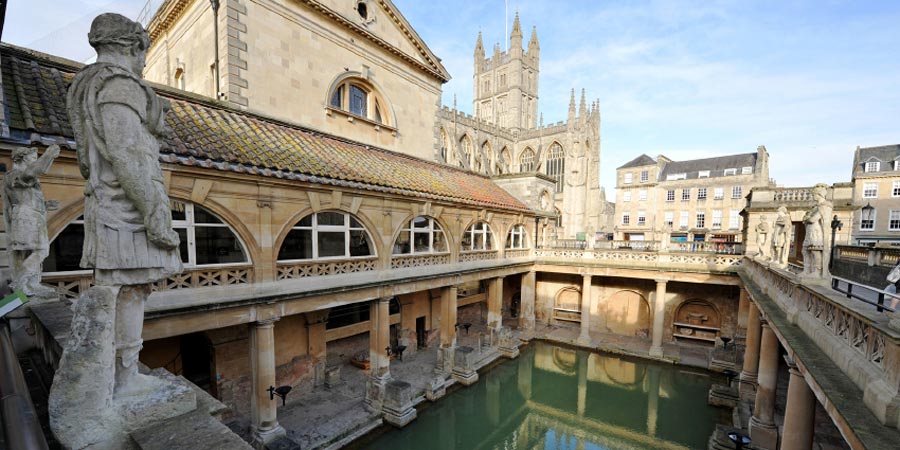Assembly Rooms
Ingrained in popular culture, Bath's Assembly Rooms were built
after the city's 18th century renaissance, and were opened in 1771.
Even at the time, they were described as "the most noble and
elegant of any in the kingdom" by contemporaries. Decorated
throughout in a grand Georgian style, with many beautiful
architectural flourishes, here the high society of the day would go
dancing and play cards. The Assembly Rooms suffered damage due to
bombing in the Second World War, but they have been lovingly
restored and are once again a delight to wander around. Look out
for many of the original chandeliers that still illuminate the
charming rooms.
Royal Crescent
In a city filled with magnificent architecture, the Royal
Crescent is perhaps the crowning glory. The famous semi-circular
terrace was designed by John Wood the Younger, and was completed in
1775. Originally called The Crescent, it gained 'Royal' status when
Prince Frederick, Duke of York took residence here from 1796. Even
today the houses are still very sought-after, and many have been
converted to satisfy demand. Perhaps visit Number 1, which has been
restored to its fantastic 18th century appearance.
Queens Square
Designed as a meeting-place by the eminent local architect John
Wood in the eighteenth century, this pretty square has an obelisk
at its centre and is surrounded by houses of fine Georgian
architecture.
Bath Abbey
The current Abbey of St Peter and St Paul dates back to 1611,
although places of worship have been built upon this site since
757AD. The Abbey features exquisitely ornamented stonework and
detailed vaulted ceilings, and an ascent of the bell-tower affords
superb views of the city.



